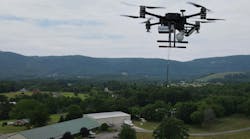Retired Navy Vice Adm. Joe Dyer is executive vice president and general manager of iRobot’s Government & Industrial Robots division. He came to iRobot following a career in the U.S. Navy, where he last served as the commander of the Naval Air Systems Command. There, he was responsible for research, development, test and evaluation, engineering, and logistics for naval aircraft, air launched weapons, and sensors. Dyer’s naval career included positions as naval aviation’s chief engineer, Commander of the Naval Air Warfare Center, Aircraft Division, and F/A-18 program manager. Earlier in his career, he served as the Navy’s chief test pilot. He also chairs NASA’s Aerospace Safety Advisory Panel.
Q. iRobot’s latest release is the PackBot Explorer. What are its capabilities? How does it differ from other PackBots? And what role will it play on the battlefield?
A. iRobot PackBot Explorer is a new addition to iRobot’s combat-proven line of PackBot robots. The iRobot PackBot family also includes the more specialized PackBot Explosive Ordnance Device (EOD) bomb disposal robot and the PackBot Scout reconnaissance robot, which are used daily in Iraq and Afghanistan to safely disarm improvised explosive devices and search buildings, caves, and tunnels for the presence of hostile forces.
PackBot Explorer’s new intelligent surveillance equipment includes three cameras, and greater flexibility to customize with sensors and other tools. These tools give soldiers and first responders excellent situational awareness, so they know what to expect and can decide how to respond in dangerous or inaccessible areas.
Q. What are the unmanned vehicles that iRobot has produced and will produce for the Army’s Future Combat Systems (FCS) program?
A. iRobot has a $51.4 million contract to develop the FCS Small Unmanned Ground Vehicle, a smaller, lighter successor to the combat-proven, man-portable PackBot. The FCS SUGV will be a portable, reconnaissance and tactical robot that can enter and secure areas that are difficult to access or too dangerous for humans.
Q. Are any of iRobot’s unmanned systems armed and prepared to engage enemy forces as opposed to reconnaissance and surveillance applications?
A. Our robots are designed to give soldiers an advantage over the enemy and options to make informed decisions. Currently, iRobot does not build armed robots. But, if the military requests a weapons payload on PackBots to protect the soldiers and further reduce fatality, iRobot will deliver the technology. iRobot robots already have patented safety systems to ensure correct usage and will continue to put humans in the decision-making process.
Q. What work is iRobot doing for the U.S. Navy? Does it involve any unmanned systems for undersea applications?
A. The Navy is the lead service for EOD systems. iRobot was awarded an $18 Million NAVSEA contract to deliver more than 150 iRobot PackBot EODs for rapid deployment in support of US troops around the world. Currently, iRobot has no plans for unmanned undersea systems.
Q. Aside from FCS and Naval applications what are some other areas where the U.S. Department of Defense is providing funding for unmanned ground systems?
A. The National Defense Authorization Act of 2001 set the goal that by 2015, one-third of the operational ground combat vehicles of the Armed Forces be unmanned. Among the DOD-funded projects iRobot is working on to help achieve this goal is iRobot Swarm.
The iRobot Swarm project was sponsored by DARPA. It represents the state of the art in algorithms, hardware and user interfaces for large swarms of autonomous robots. The goal of the Swarm project was to develop distributed algorithms for robotic swarms composed of hundreds of individual robots. Our algorithms are designed to be completely scalable, and to function with groups of 10 to 10,000 robots, and the development platform is the world’s largest swarm, with more than 100 individual robots.
Q. What capabilities will iRobot be designing into their unmanned systems five years from now? How will the battlefield role of these unmanned ground systems evolve?
A. iRobot is continuously working in concert with our customers to assess the dynamic nature of geo-political and military requirements to tailor our products and services to provide maximum value to the warfighter. John Deere and iRobot are currently working on a Military R-Gator. The intelligent vehicle is built on the rugged John Deere M-Gator platform and enhanced with proven iRobot robotic controls, navigation, and obstacle avoidance systems. It is designed to serve numerous roles, such as acting as unmanned scout, “point man,” perimeter guard, pack/ammo/supply carrier and more for soldiers, marines, and airmen. Pre-production for the Military R-Gator is currently underway, with full production slated to begin in 2006.
Q. Many Military & Aerospace Electronics readers are COTS electronic component and subsystem suppliers. Do iRobot’s unmanned systems have open architectures and are there opportunities for electronic component suppliers to contribute to iRobot’s vehicles in the future? Or does iRobot perform most of this work in house with custom designs as opposed to COTS?
A. iRobot’s new PackBot Explorer features seven payload ports. The system’s architecture includes Ethernet, USB hubs, motion control, power and two video channels. This design quickly and efficiently supports integration of a wide range of third-party payloads, sensors, and systems.
Vice Adm. Joe Dyer, Executive VP and general manager of iRobot’s Government & Industrial Robots division




